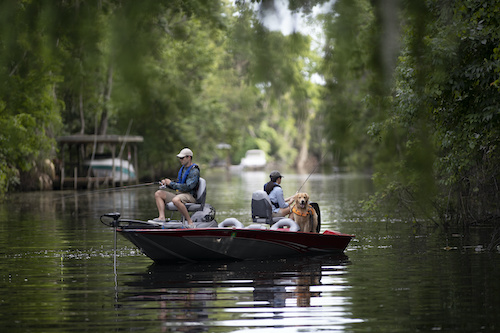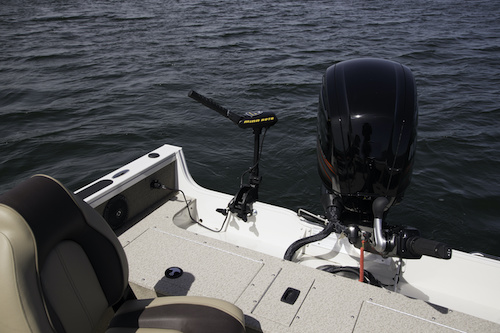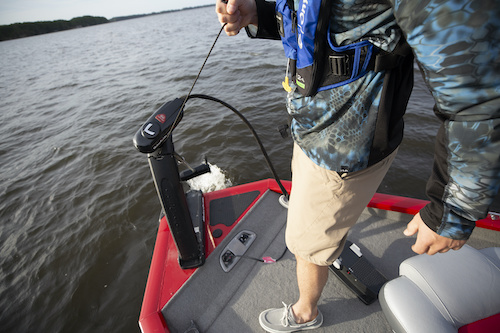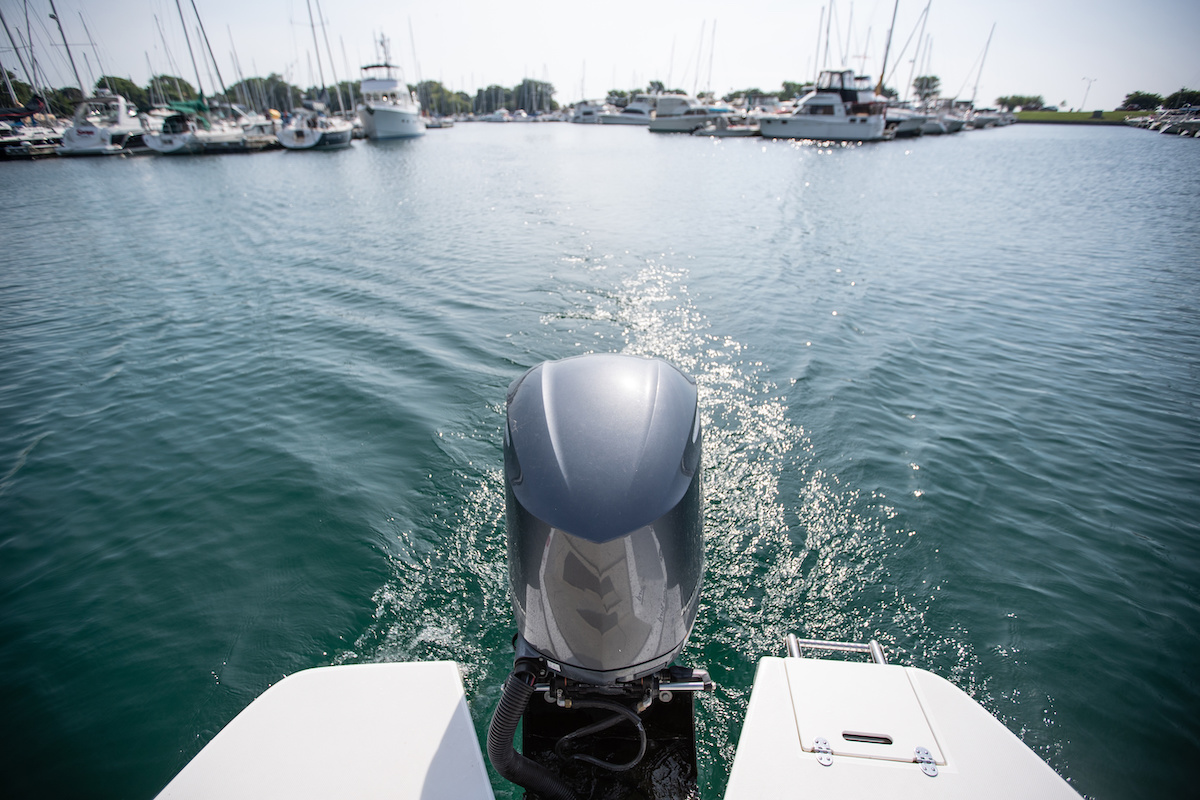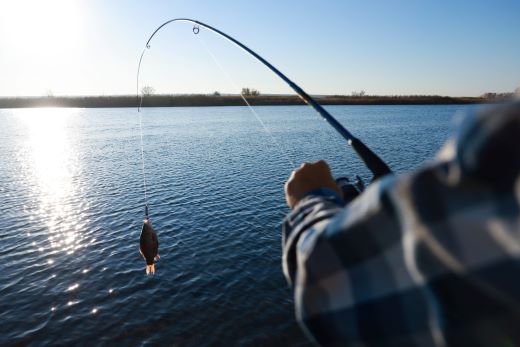A trolling motor is a compact, electric, or gas-powered motor used for low-speed maneuvering.
Unlike your main outboard engine, a trolling motor is designed for quiet operation and fine control. This makes it especially valuable for fishing or navigating in areas that require precision.
Most trolling motors are powered by batteries and have controls that let you steer, adjust speed, and position your boat without starting your main engine.
These motors are popular for freshwater and saltwater use. They are available in several options to suit different boats and boating styles.
How Fast Do You Go With A Trolling Motor?
Most electric trolling motors can move a small to medium boat at about 3 to 5 mph at top speed. However, trolling motors are more about control than speed.
Explore All-Purpose Fishing Boat Brands & Models
Types of Trolling Motors
Trolling motors are typically categorized based on their mounting location and control style. Understanding the different types will help you make a better decision for your boat and how you plan to use it.
1. Bow-Mounted Trolling Motors
Mounted at the front of the boat, bow-mounted trolling motors offer the most control and accuracy. Because they pull the boat rather than push it, they provide better maneuverability, especially in wind or current.
Bow mounts are popular among serious anglers who need precise boat control while casting or following a shoreline. These motors generally require a flat deck for mounting and often feature foot pedal or remote control options.
2. Transom Mounted Trolling Motors
Transom-mounted trolling motors are installed at the back of the boat and are generally easier to set up and operate. They're an excellent choice for beginners, small boats, or anyone looking for a straightforward solution.
These motors push the boat from the stern and are usually controlled by a hand tiller. They're cost-effective, simple to install, and ideal for casual use or short trips.
3. Tiller Steer Trolling Motors
Tiller steer trolling motors use a handle (or tiller) for steering and throttle control. This traditional design is intuitive and offers immediate feedback while navigating. Most transom-mounted models use tiller steering, although some bow-mounted versions are available.
Tiller steer motors are ideal for boaters who prefer hands-on control and quick adjustments.
4. Foot Pedal Controlled Trolling Motors
Foot pedal-controlled trolling motors are common among anglers who need hands-free control while casting or reeling in fish. These pedals typically allow for steering, speed control, and motor on/off functions using your foot.
They offer convenience and a streamlined workflow, especially when fishing solo or when you need to keep your hands on the rod.
5. Digitally Controlled Trolling Motors
Digitally controlled trolling motors have advanced features like GPS positioning, cruise control, and wireless remote operation. Some models can even hold your boat in place with the press of a button or follow a predetermined route.
These motors are ideal for tech-savvy users or those who want high precision and minimal manual adjustment. They're instrumental in larger boats or fishing in open water where staying on a specific spot is key.
Choosing the Right Trolling Motor for You
Selecting the right trolling motor depends on a few key factors:
- The size and weight of your boat
- How you plan to use the motor
- Your preferred control method
For smaller boats, a transom mount with tiller steering may be all you need. However, larger boats often benefit from bow-mounted motors with foot pedals or digital controls.
Pay attention to thrust rating, which indicates the power level needed to move your boat effectively. Also, consider shaft length, especially if you plan to operate in rougher water where a deeper propeller position is needed.
How to Use a Trolling Motor For Beginners
Once installed, operating a trolling motor is relatively simple, but using it well takes a bit of practice.
Start by lowering the motor into the water and powering it using the switch or remote. Use your tiller, foot pedal, or digital control system to adjust speed and direction. Move slowly and make minor adjustments to maintain course or position.
While fishing, use short bursts of movement to stay quiet and reduce disturbance. Adjust the shaft depth to keep the propeller fully submerged and avoid splashing or cavitation, which can scare off fish or reduce efficiency.
Read Next: How to Use a Fish Finder
Tips for Using a Trolling Motor
- Start at low speeds to get a feel for the motor's responsiveness. This helps with smoother handling and extends battery life.
- Monitor your battery levels regularly, especially during longer trips.
- Always rinse your motor with fresh water after saltwater use to prevent corrosion.
- Keep the propeller clear of weeds, fishing lines, or debris, which can reduce performance or cause overheating.
- Practice operating the motor in conditions like wind, current, or shallow water.
- Use your motor strategically during fishing. Rather than running it non-stop, pulse it in short intervals to make micro-adjustments and hold your position.
- If your model includes GPS features like anchor lock or route tracking, understand how those functions work and how they can improve your time on the water.
Trolling Motors Offer Control
Trolling motors give boaters more control in tight spaces and improve stealth when fishing. They're also an excellent way for beginners to build confidence in handling a boat, offering low-speed maneuverability that's forgiving and easy to learn.
Once you understand how to use a trolling motor, it becomes a valuable tool in your boating setup. From gliding quietly through a calm lake to positioning yourself for the perfect cast, this small motor plays a big role in a smooth experience on the water.
